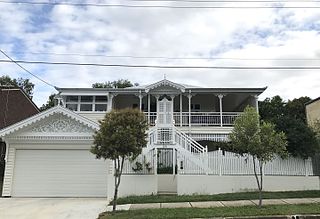This article needs additional citations for verification. (April 2018) |

Australian residential architectural styles have evolved significantly over time, from the early days of structures made from relatively cheap and imported corrugated iron (which can still be seen in the roofing of historic homes) to more sophisticated styles borrowed from other countries, such as the California bungalow from the United States, the Georgian style from Europe and Northern America, and the Victorian style from the United Kingdom. A common feature of the Australian home is the use of fencing in front gardens, also common in both the United Kingdom and the United States.
Climate has also influenced housing styles, with balconies and veranda spaces being more prevalent in subtropical Queensland due to the mild, generally warm winters experienced in the state. For many years, Australian homes were built with little understanding of the Australian climate and were widely dependent on European styles that were unsympathetic to Australian landscapes. In recent times, modern Australian residential architecture has reflected the climatic conditions of the country, with adaptations such as double and triple glazing on windows, coordination considerations, use of east and west shade, sufficient insulation, strongly considered to provide comfort to the dweller.
Another aspect of Australian suburbia is that the suburbs tend to have a combination of both upper middle class and middle class housing in the same neighbourhood. In Melbourne, for instance, one early observer noted that "a poor house stands side by side with a good house."[1] This is somewhat less common today, with home renovations, gentrification and the teardown ("knock down, rebuild") method becoming more and more common in affluent suburbs, giving a broader distinction between wealthy and lower class areas. However, the teardown technique has led to home buyers purchasing land or older homes in poorer metropolitan areas and building extravagant homes on the land, which look out of place and excessive, failing to match with the remaining houses in the street.[1]
